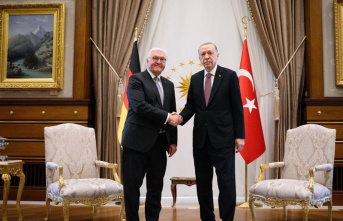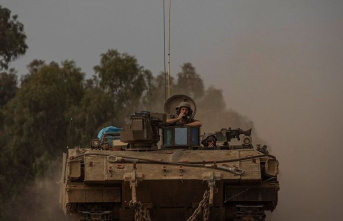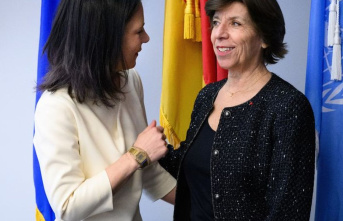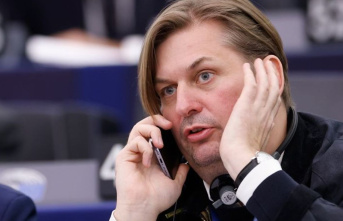For the liberation of its territories occupied by Russia, Ukraine not only relies on battle tanks from Germany, the USA and other countries. She is also demanding fighter jets from the West to support a planned offensive. As Moscow puts it, that would mean “no good” for Russia. Some questions and answers about the possible deliveries:
In contrast to the clear demand for main battle tanks, Ukraine does not have a unified line when it comes to fighter jets. Deputy Foreign Minister Andriy Melnyk mentioned practically all known aircraft types such as the US F-16, F-35, the European developments of the Eurofighter and the Tornados, the French Rafale and the Swedish Gripen. Above all, it should be about the F-16.
The US has extensive and surplus inventories of older fighter jets - including a large aircraft junkyard at Davis-Monthan Air Force Base in Arizona where military machines are cannibalized. With older aircraft types such as the F-15 or F-16 and F-10 ("warthog"), it might well be possible to buy the repairs on the open market. Spare parts are available in large numbers. The basic requirement is the training.
Ukraine's war goal is the complete liberation of the territory occupied by Russia - including the Crimean Peninsula, which was annexed in 2014. For an effective advance of the ground forces, which will soon be reinforced by Western main battle tanks, these must ideally be supported by the Luftwaffe. Due to the still functioning Ukrainian air defense, Russia only uses its own jets to a limited extent for bombardments near the front.
In the war, both sides repeatedly succeed in shooting down enemy planes. Reports of direct dogfights between Ukrainian and Russian fighter jets only appeared in the first days of the war. Western jets could help close gaps here. But regaining air supremacy would not be expected even after the delivery of dozens of fighter jets from the West. That would only be possible if the Russian anti-aircraft systems were completely disabled.
Before the war, according to London-based analysts at the International Institute for Strategic Studies, Ukraine had about 110 operational combat aircraft. 70 of them Soviet-type Mig-29 and Sukhoi 27 fighters. In addition, 45 Sukhoi 25 and 24 to combat ground targets. According to the weapons analysts of the Oryx investigative group, Kyiv received another 18 Sukhoi 25 from various sources during the war. According to media reports, Poland has already delivered Mig-29s in individual parts, and the federal government has also contributed Mig-29 spare parts. The Russian military claims to have shot down more than three times all existing Ukrainian planes.
Western supporters of Ukraine, meanwhile, have sent large and heavy weapons for ground combat and air defense. Defense systems such as Patriot and Iris-T are extremely effective against enemy aircraft, missiles and drones 24 hours a day - and yet they only protect a certain area of their own location. Unlike combat aircraft, which are suitable for protecting large regions, if only for, say, one and a half hours per flight.
Even more than for surveillance and protection against attacks, combat aircraft can intervene as so-called close air support in battles on the ground. What's more, they make it possible to attack the opponent's "center of gravity". Ukraine would be able to destroy Russian supply routes, staging areas, fuel depots and strategic targets. At that point at the latest - some fear - it becomes politically dangerous, which does not seem forbidden in terms of self-defence.
Russia would see the delivery of fighter jets as a further major step for the direct involvement of the West in the conflict in Ukraine, which Moscow has long claimed. Russian diplomat Konstantin Gavrilov, who is responsible for arms issues, said on Russian state television that the jets would expand the combat area geographically. That means "nothing good" for Russia, but it's also not a catastrophe.
Several countries, including the United States and Poland, do not rule out the delivery of fighter jets to Ukraine. The federal government does not want to send this signal. Politicians in the traffic light coalition currently accept this step neither as a project nor as an option, with Chancellor Olaf Scholz (SPD) leading the way. But the pioneers of the Leopard delivery, the FDP politician Marie-Agnes Strack-Zimmermann and the Green Anton Hofreiter, made it clear that they were against a delivery of fighter jets.
Although Russia already has no air superiority over Ukraine, its fighter jet formations are not yet fully operational. Almost every day, Russian state television proudly shows the destructive power of Russian missiles fired from planes. General and military pilot Vladimir Popov said in an interview with the Moscow newspaper "MK" that Russia would shoot down the fighter jets with air-to-air missiles. If that doesn't succeed, they would have to be destroyed at the air force bases using high-precision weapons.
The Ministry of Defense in Moscow recently rejected information from the West that Russia could run out of missiles and ammunition. Russia's power leadership does not want to let go of its goals of occupying the four Ukrainian regions of Donetsk, Luhansk, Zaporizhia and Cherson. Kremlin boss Vladimir Putin has repeatedly emphasized that the nuclear power Russia will assert its interests with all the means at its disposal.











